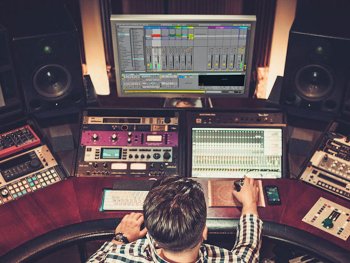Noiselab Things Every Ableton Producer Should Know Part I TUTORiAL

AudioZ Exclusive | 19 December 2018 | 291 MB
Learn several useful tips that you may not be aware of. We will demonstrate how to not only name scenes, but also assign a tempo and time signature to individual scenes. Converting audio to MIDI will be demonstrated, which can be a useful tool when you're not able to translate a musical idea in your head (or contained in a sample). The concepts of grouping tracks and grouping devices (which creates a rack) will be covered in more detail, which will give you much more flexibility when dealing with multiple devices or tracks. Lastly, we'll cover slicing audio to MIDI and slicing with the Simpler instrument, which are two features that any Ableton user will be able to take advantage of. These hard-to-find skills will give you an edge as an Ableton producer.
Here’s an overview of what we’ll cover in each lesson:
Lesson 1 – Scenes
- Introduction to scenes
- Naming and coloring scenes
- Tempo and time signature assignment
- Demonstration of organizing clips into scenes that are named based on the part of the song (e.g., verse, hook, etc.), with one scene with a tempo change and one with a time signature change
Lesson 2 – Converting Audio to MIDI
- Converting harmony to MIDI (for polyphonic material)
- Converting melody to MIDI (for monophonic material)
- Converting drums to MIDI (for drum beats)
Lesson 3 – Grouping Tracks
- The many benefits of grouping (e.g., being able to process multiple tracks at once, routing audio from several tracks to another destination quickly, resampling material from a specific group of tracks, etc.)
- FX on the group track
- Grouping drum tracks
- Sending audio from all of the group tracks to a return by using the send knob on the group track
- Resampling audio from group track by recording output of the group to another audio track
Lesson 4 – Racks
- Explanation of parallel chains
- Using velocity to switch between instruments
- Using the selector in the rack so certain instruments only play when the selector is inside their zone (and mapping the selector to a macro knob)
- Making specific key ranges play specific instruments in the rack (e.g., low keys play bass, high keys play piano)
- MIDI effects in a rack (e.g., arpeggiator, chord, and scale device)
- Setting up the MIDI effects rack to go between an arpeggiated melody and one that isn't arpeggiated
- Audio effect racks
Lesson 5 – Slicing Audio
- How to slice audio to MIDI
- Slicing audio to a drum machine (better if you want the slices to have different parameter settings) or to a sampler (good if you want to treat the slices as if they are part of the same instrument patch)
- Demonstration showing how we can slice audio directly in the Simpler
This exclusive release was generously supplied to us by our member XImpalerX
Thank you for supporting AudioZ!
